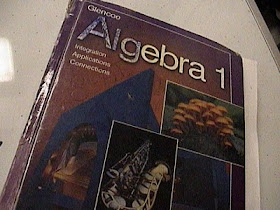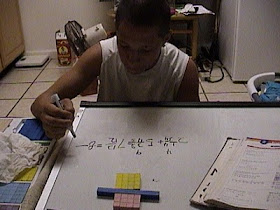This whole "lesson" lasted about 45 minutes, which is long "lesson" for kids this age, but as long as their attention was engaged and it was easy and fun we kept going. So, really it was just play time although the older student knew he was "learning stuff". Obviously, a little more went on here than I was able to capture in pictures. With children this age the camera is a HUGE distraction so I only managed to snap 6...and then took a couple of the book so you could see that too. We spent much more time with the blocks than the books BTW.
Here we are b uilding 10's and 9's...the older boy is 5 the younger 3 almost 4. The older boy can answer without looking, "what does two need to be a ten?"
2 + x = 10,
In fact he knows his tens addends so well he doesn't have to think about it. Mastery.
We are doing this for the benefit of the younger student. Incorporate algebra immediately. The concept of "x" is easy if they've been playing with it since they were little.
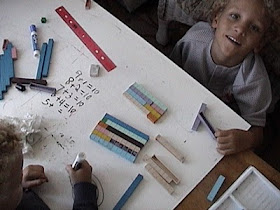
Doing nines is also easy but takes a little thinking. They are almost mastered. Why people don't teach little kids algebra from the get go is beyond me. Here one child is counting units the younger child is counting x. (In the mathematics "x" IS the plural.)

The younger student is "building stairs" with x's, basically he is playing with them and using his imagination. X is simple concept. We continue on with the basic concept that the numbers have TWO parts, the "how many" part and the "what kind" part. When the tens are on the smooth side we call them x. (At this age he still calls them "exes.") He is counting out x.
x + x = 2x.
This is no big deal.
2x + x = 3x...I have spent time in high school and
college classes explaining where the "two" came from in x + x, and how we got 3 when adding 2x + x because the one is invisible and x + x being 2x doesn't make any sense. Text books say "the one is understood" ...except it isn't. These children will never have this problem. Further we talk about x
2 + x
2 making 2x
2, didn't get a picture of it but it's them playing with the big red squares. I have seen numerous college aged students add x
2 + x
2 and get x
4!!!!! I'm the only one right? The system in place for mathematics instruction in the USA is broken. Anyhow, before I go off on a diatribe, these little kids can see that two red squares have nothing to do with 4...if the red squares are called x
2 (x-squared) then two of them are simply 2x
2. Painfully obvious. In the Montessori method they say "visually obvious".
Little kids doing algebra? YES, THEY CAN.

Building 8's.
When we build eights he has to get out blocks to make sure... Just because he is familiar with the addends for 10 and 9 does
NOT mean he is automatically able to do 8's...many teachers fail to recognize this. They need to learn addends just like they have to practice ABC's...there are
only 25 addends from 1 to 10 and 45 single digit addends in all ending with 9+9.

Note I told him to build 8's I didn't tell him to start in any certain order, like 1+7, 2+6, etc he's just building...note we aren't using any symbols or drawing. Just because the child can write doesn't mean they can't learn "complex" math concepts. Later we can go back and use symbols...and know what they
MEAN.

Just fooling around, they got out a ruler because I said, "measure it to make sure"...I meant measure with the blocks and they knew it, but since we are just having fun we played with the ruler too. Measurement is an important area of study in math.
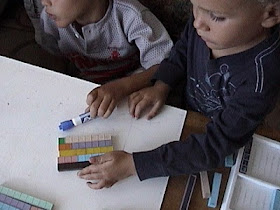
Then of course we measured with a pen. Have fun with it. Math time doesn't have to be serious at all...
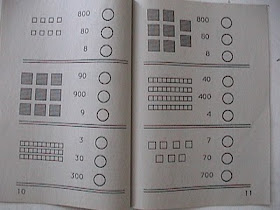
The 3 year old can't make numbers but he can point to the right answer. This page is fun because it has a lot to count...6 "problems". Again, the numbers have the "how many" part and the "what kind" part. Here we are learning units or ones, tens and hundreds. Just matching the picture and the symbols...900 is square and we can count it by three's...
The 3 year old is given pause when counting tens: "Oh man this is gonna take forever" he starts counting the tens one unit at a time then I show him we can just count 10, 20 30...this is not the first time he has seen this book and it will be new every time for about another 18 times...repetition is the mother of skill. At this age repeating it over and over again is natural and fun. Which is why this is a great time to teach multiplication songs...it will be fun and easy and avoid tedium later when the brain has moved onto a stage of development where repetition is not as large a part of the child's learning modality.

This page which came after the other page shown, (note the page numbers) is not as much fun because there isn't as much to count...or so says the 3 year old. I'd say he's the fun expert.
Here is more on counting and
combining like terms.
Much more at
Crewton Ramone's House Of Math.
"Almost all creativity involves purposeful play." ~Abraham Maslow American psychologist 1908-1970
"Whoever wants to understand much must play much." ~Gottfried Benn German physician 1886-1956
"Play gives children a chance to practice what they are learning." ~Fred Rogers American television personality 1928-2003
"People tend to forget that play is serious." ~David Hockney Contemporary British painter
"Do not…keep children to their studies by compulsion but by play." ~Plato Greek philosopher 427-347 BCE
"Necessity may be the mother of invention, but play is certainly the father." ~Roger von Oech Contemporary American creativity guru
More
math quotes and more
education quotes at my site.


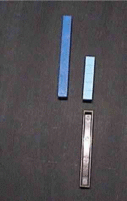
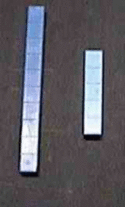 Need step where I show 3 all by itself...
Need step where I show 3 all by itself...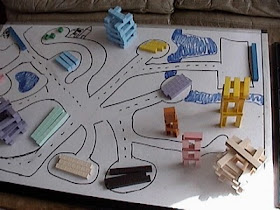 My first try at a screen cast: http://screencast.com/t/Y2VlMDkzODA Here is a board set up for learning addition and multiplication as well as some algebra. The towers or building need to be skip counted, tens need to be delivered to the tens depot...all manner of games can be played here. Math land or Math Town is a fun place to learn.
My first try at a screen cast: http://screencast.com/t/Y2VlMDkzODA Here is a board set up for learning addition and multiplication as well as some algebra. The towers or building need to be skip counted, tens need to be delivered to the tens depot...all manner of games can be played here. Math land or Math Town is a fun place to learn. 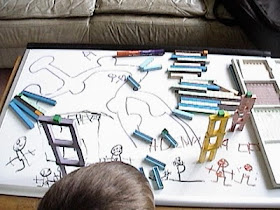 Some people drawn in makes it fun. These are not towers but robots with green units for heads.
Some people drawn in makes it fun. These are not towers but robots with green units for heads.  Here a ten ton truck loaded with a nine and a unit makes it way to the ten depot.
Here a ten ton truck loaded with a nine and a unit makes it way to the ten depot. 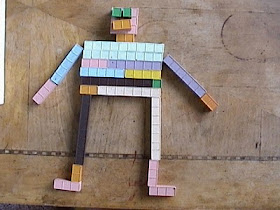 Math robot with lots of addends for 8, 9 and 10.
Math robot with lots of addends for 8, 9 and 10. 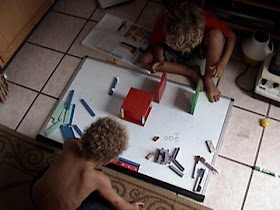 They are just playing blocks learning about 400, 4x2 and addends for 7.
They are just playing blocks learning about 400, 4x2 and addends for 7. 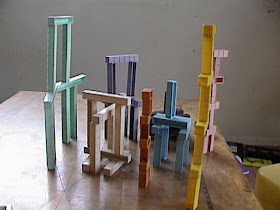 A city of multiplication facts.
A city of multiplication facts. 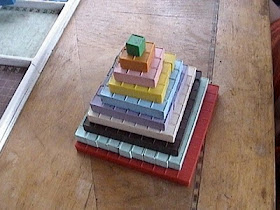 A pyramid of square numbers. A ton of math can be taught here. Geometric progression. Square roots, various values of x2 etc. Another thing I didn't mention in the screencast is children can discover for them selves that 22 is 4 times bigger than 12 and that 42 is 4 times bigger than 22 even though 2 is only 1 x 2, and 4 is only 2 x 2. In other words the base is only twice as big but when you raise to a second power it's more than twice as big. Let them make up their own rules and discover if the pattern is consistent...is 82 four times bigger than 42?
A pyramid of square numbers. A ton of math can be taught here. Geometric progression. Square roots, various values of x2 etc. Another thing I didn't mention in the screencast is children can discover for them selves that 22 is 4 times bigger than 12 and that 42 is 4 times bigger than 22 even though 2 is only 1 x 2, and 4 is only 2 x 2. In other words the base is only twice as big but when you raise to a second power it's more than twice as big. Let them make up their own rules and discover if the pattern is consistent...is 82 four times bigger than 42? 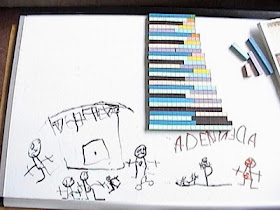 What do the pictures have to do with math. Nothing. We were just having FUN with addends from 11 to 18. Note the child used one hand to write his name forwards and his other hand to write his name backwards, just for fun. There's a genius trapped inside every child.
What do the pictures have to do with math. Nothing. We were just having FUN with addends from 11 to 18. Note the child used one hand to write his name forwards and his other hand to write his name backwards, just for fun. There's a genius trapped inside every child. 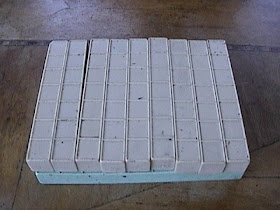 This was a "cake" we made with the nines are the cake the sevens are the frosting, 7 x 9 = 9 x 7. A concept many students have to see to believe when they are first starting out.
This was a "cake" we made with the nines are the cake the sevens are the frosting, 7 x 9 = 9 x 7. A concept many students have to see to believe when they are first starting out. 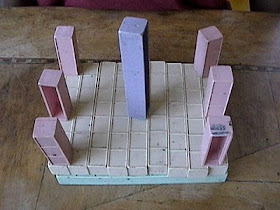 Cakes need candles. We can skip count by three and the six is just two threes stuck together...we could only skip count to 24...and the kid was 7 years old...we also do algebra and division 63/x = 7 and 63/x = 9 in addition to x/9 = 7 and x/7 = 9...it's easy when you can see it...MAKE MATH FUN. Don't make it hard. "Do not…keep children to their studies by compulsion but by play." ~Plato Greek philosopher 427-347 BCE
Cakes need candles. We can skip count by three and the six is just two threes stuck together...we could only skip count to 24...and the kid was 7 years old...we also do algebra and division 63/x = 7 and 63/x = 9 in addition to x/9 = 7 and x/7 = 9...it's easy when you can see it...MAKE MATH FUN. Don't make it hard. "Do not…keep children to their studies by compulsion but by play." ~Plato Greek philosopher 427-347 BCE 







